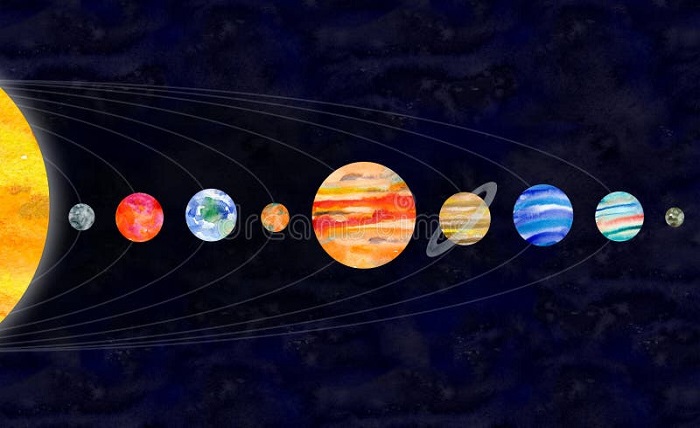
Blast Off with Creativity: A Guide to Drawing the Solar System
The solar system, our cosmic neighborhood, has captivated humanity for millennia. From the fiery sun to the icy moons of Pluto, its diverse worlds ignite imaginations across the globe. And what better way to explore this celestial wonder than by capturing its beauty on paper?
Why Draw the Solar System?
Drawing the solar system is more than just a fun activity; it’s a rewarding journey of discovery. It allows you to:
- Visualize the scale and relationships of the planets: By putting pen to paper, you gain a deeper understanding of the vast distances and orbital paths within our solar system.
- Enhance your creativity and artistic skills: Experimenting with different mediums and techniques allows you to express your unique artistic vision.
- Spark a passion for science and astronomy: Immersing yourself in the creative process can ignite a lifelong curiosity about the universe.
Gathering Inspiration: Before You Start Drawing
Before you embark on your artistic adventure, take some time to gather inspiration:
- Browse space imagery: Explore online resources like NASA’s website or astrophotography galleries to get a feel for the planets’ textures, colors, and features.
- Read books and articles: Dive into scientific texts or children’s books to learn about the unique characteristics of each planet.
- Visit a planetarium or observatory: Immerse yourself in the awe-inspiring vastness of space and observe celestial objects firsthand.
Let’s Get Drawing: Tools and Techniques
Now, it’s time to unleash your inner artist! Here are some essential tools and techniques to get you started:
Tools:
- Drawing paper or canvas: Choose a surface that can handle your chosen medium.
- Pencils and erasers: Sketching your initial outlines and making corrections is crucial.
- Colored pencils, crayons, or paints: Bring your planets and stars to life with vibrant hues.
- Rulers and compasses: Ensure accuracy and create perfect planetary shapes.
- Stencil templates: Simplify the process for younger artists or add intricate details.
Techniques:
- Layering: Build up depth and texture by adding multiple layers of color or shading.
- Blending: Create smooth transitions between colors for a more realistic effect.
- Stippling: Use tiny dots to create shading and highlights for a unique look.
- Negative space: Use the empty space around your planets to define their shapes and add visual interest.
Drawing the Planets: A Step-by-Step Guide
Ready to bring these celestial bodies to life? Here’s a basic step-by-step guide for drawing the eight planets (excluding Pluto, as it’s no longer classified as a planet):
- Start with the Sun: Draw a large circle in the center of your paper. Use yellow, orange, and red to create a fiery glow.
- Mercury: Draw a small, rocky planet close to the Sun. Use shades of gray and brown for its cratered surface.
- Venus: Draw a slightly larger planet with a thick, swirling atmosphere. Use soft yellows and greens to depict its clouds.
- Earth: Our home planet! Draw a blue marble with swirling white clouds and green and brown landmasses.
- Mars: The red planet! Draw a rusty red sphere with dark polar ice caps.
- Jupiter: The gas giant! Draw a massive swirling planet with a thick red band and a white Great Red Spot.
- Saturn: The ringed wonder! Draw a large planet with prominent, thin rings made of ice and dust.
- Neptune and Uranus: These ice giants are further out and appear smaller. Use shades of blue and green to represent their icy atmospheres.
Bonus Tips:
- Add moons, asteroids, and comets to create a more dynamic scene.
- Label the planets for an educational touch.
- Use different textures and patterns to represent the unique features of each planet.
- Don’t be afraid to experiment! There’s no right or wrong way to draw the solar system.
Conclusion: A Universe of Creativity
Drawing the solar system is an enriching experience for artists of all ages and skill levels. It’s a journey of exploration, discovery, and endless creative possibilities. So, grab your tools, unleash your imagination, and embark on your own artistic adventure through the cosmos!




